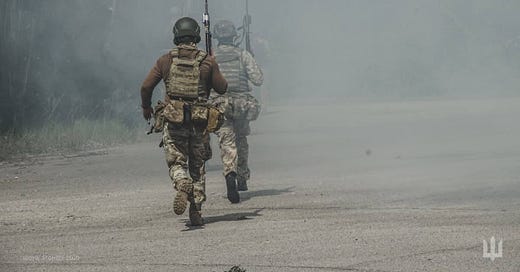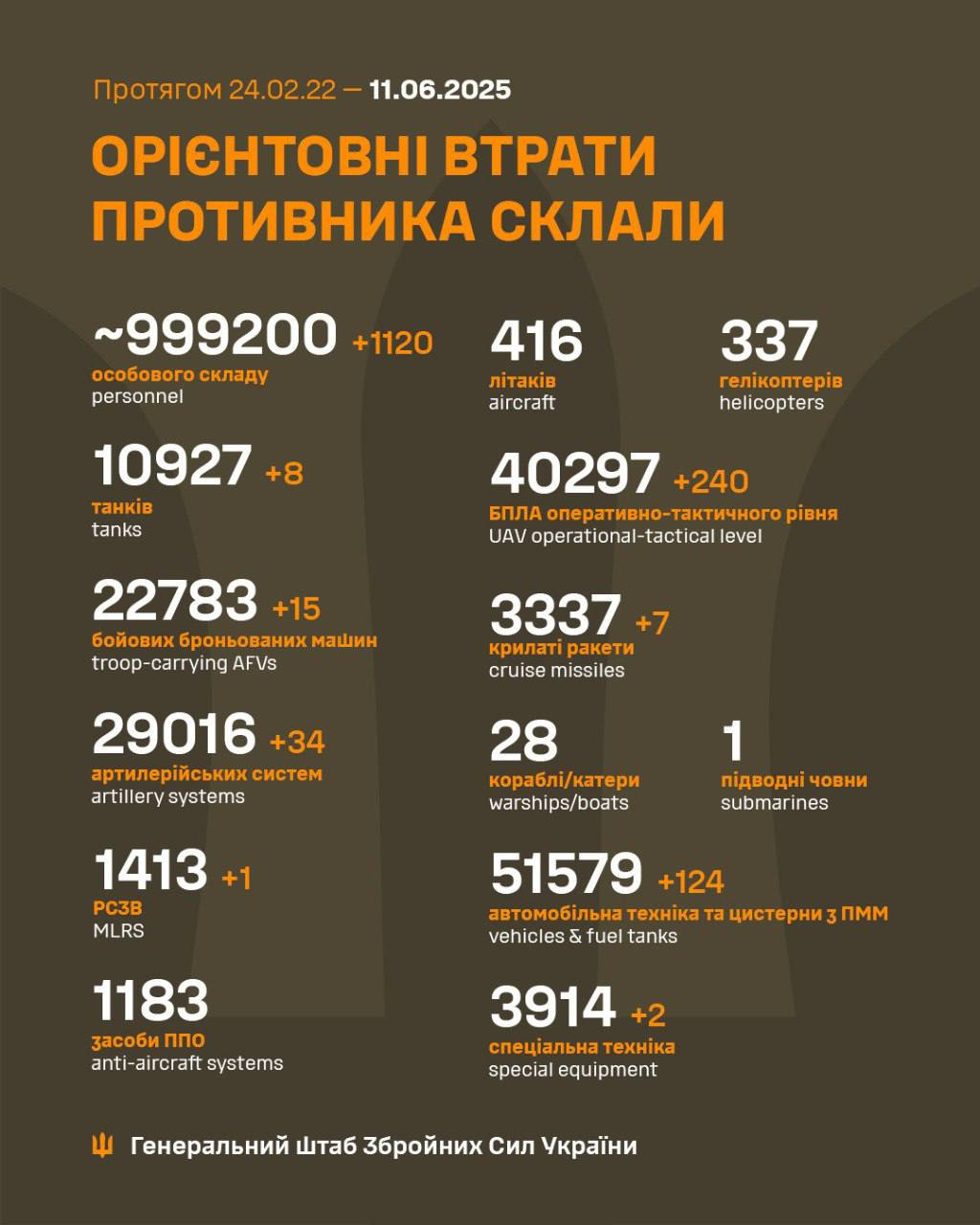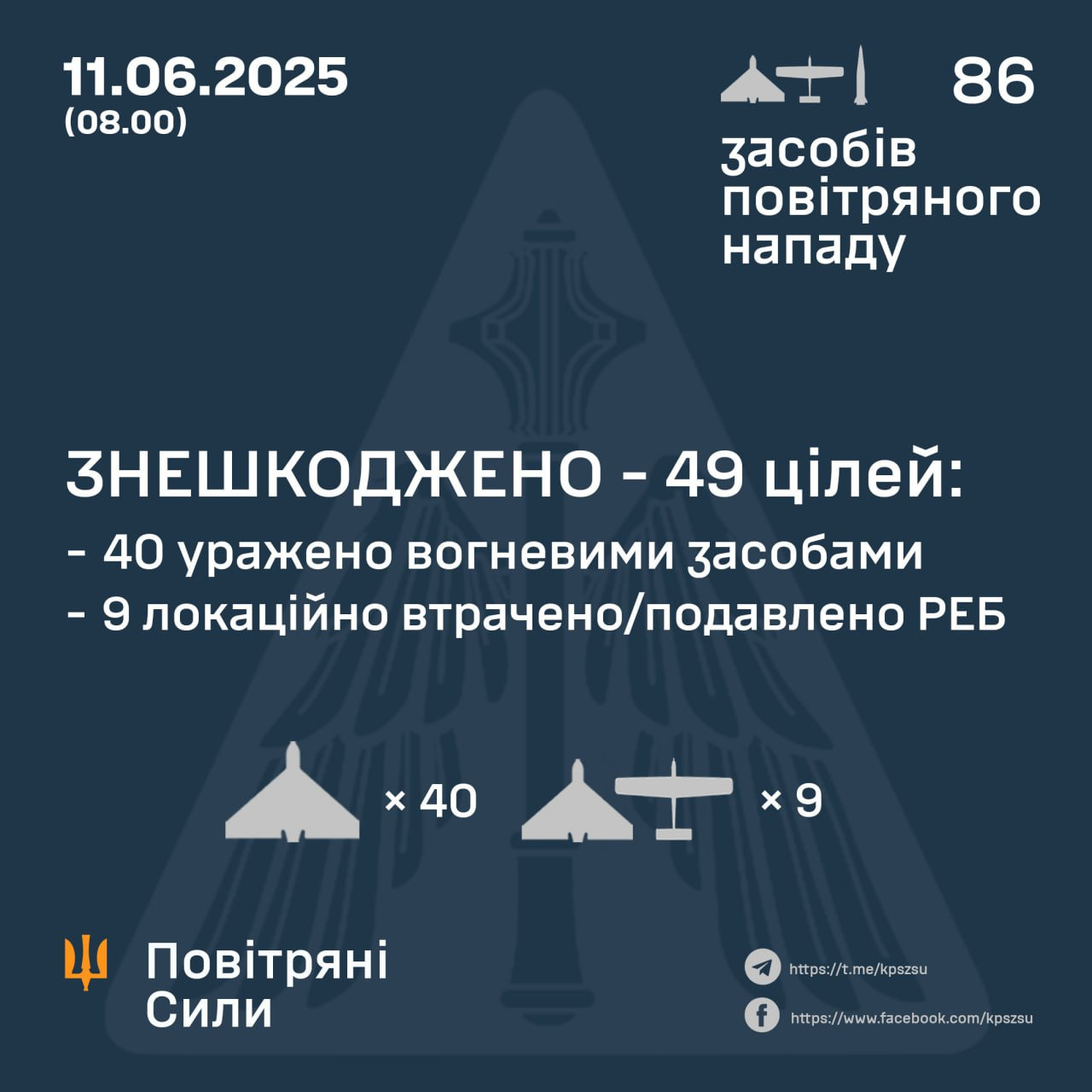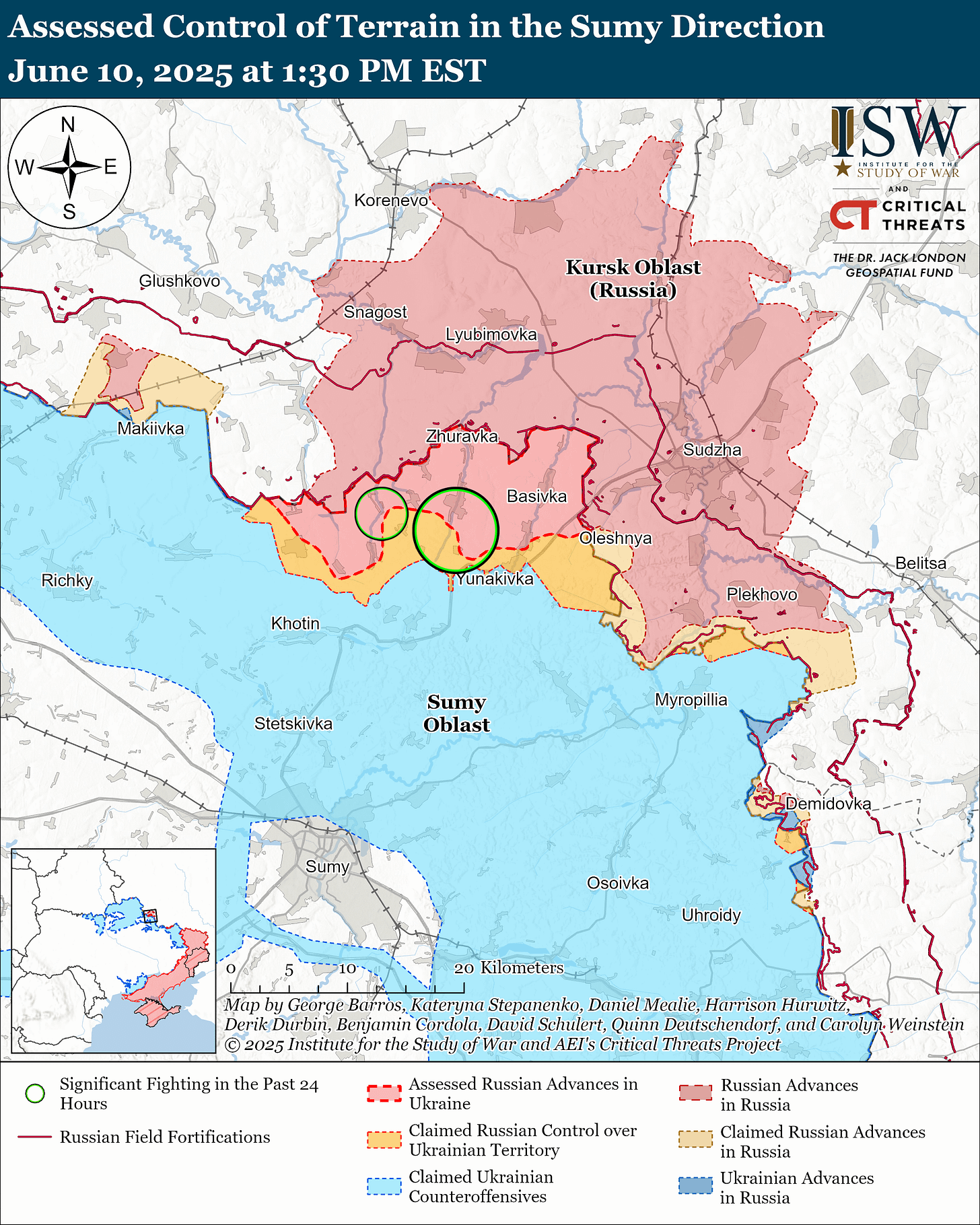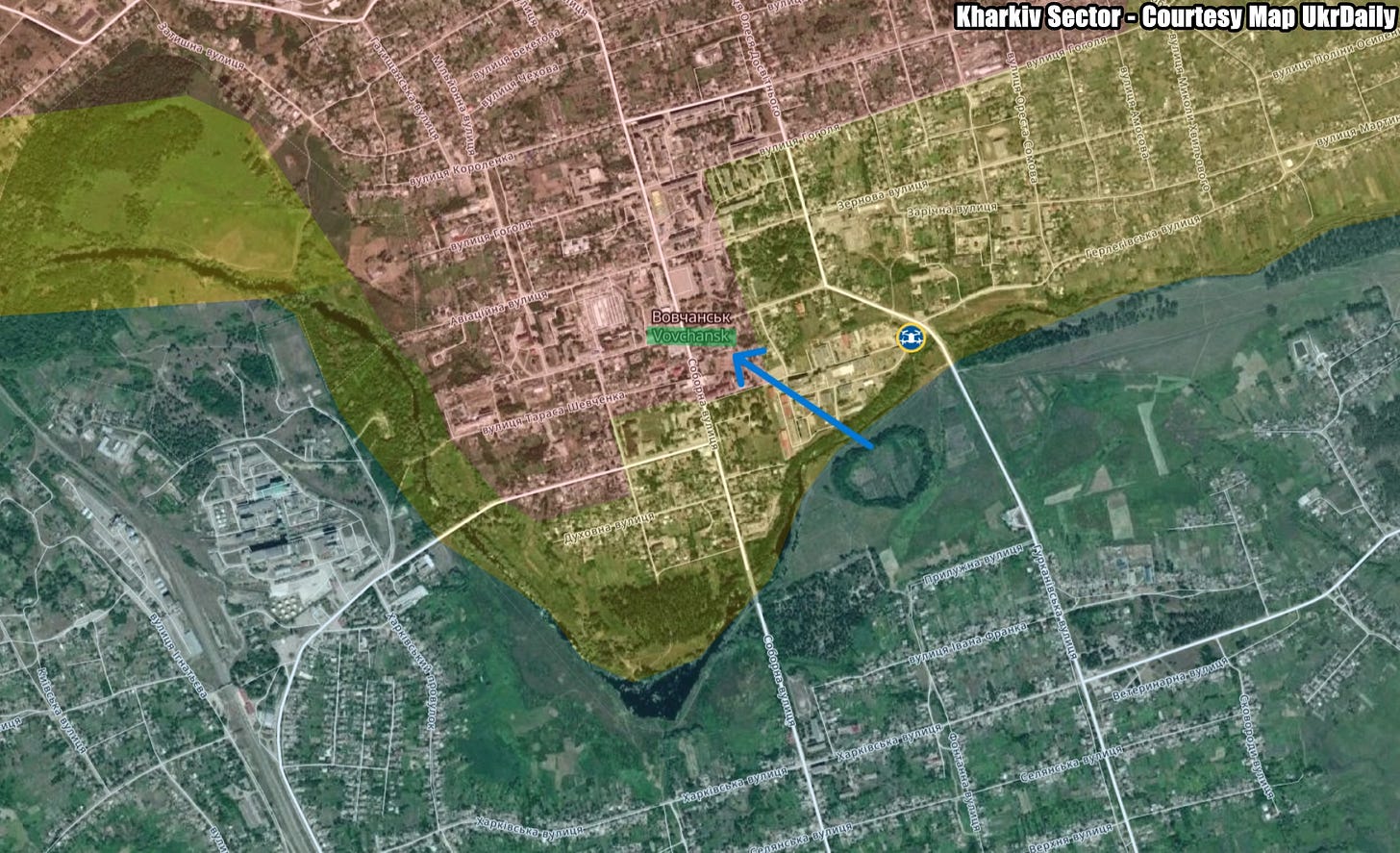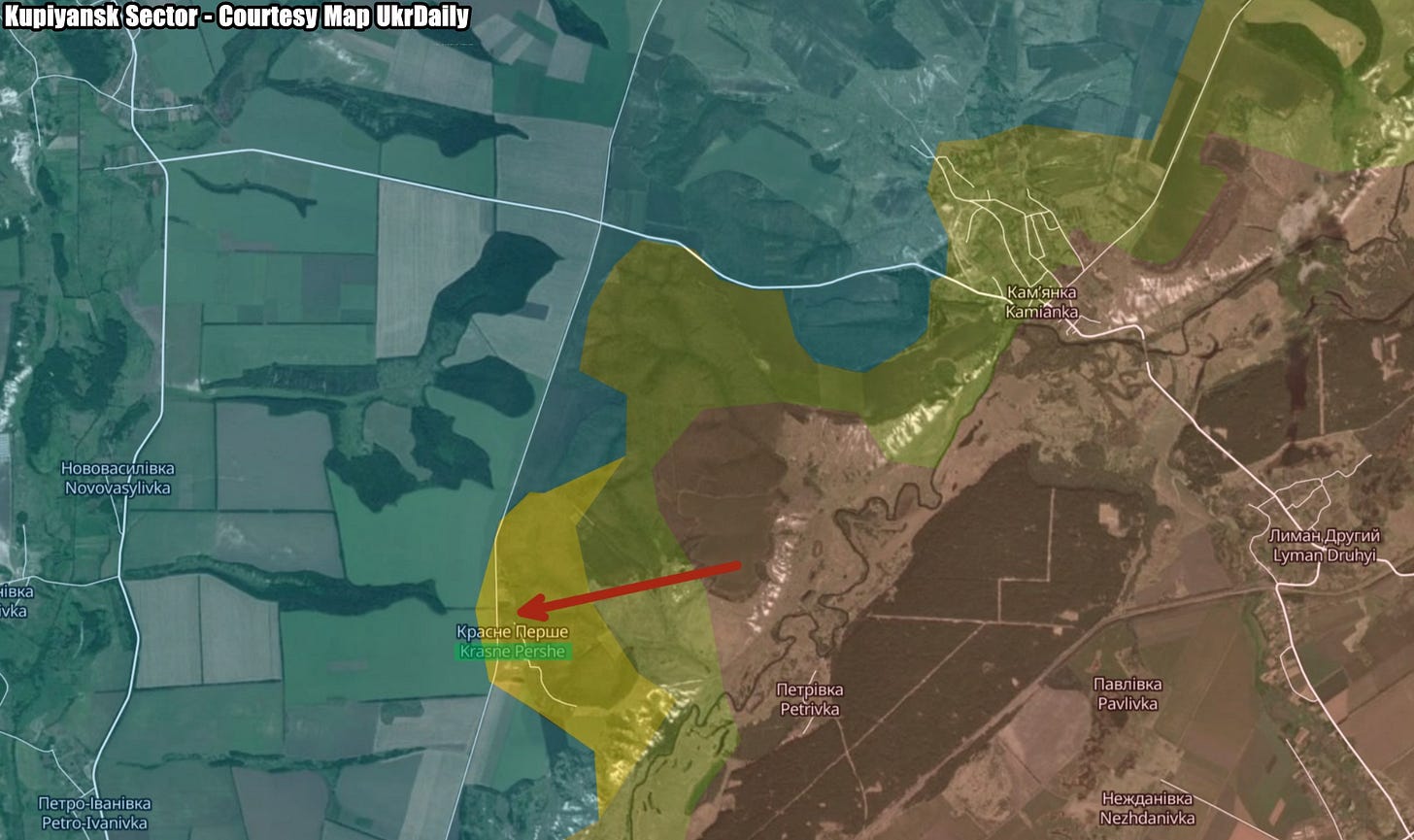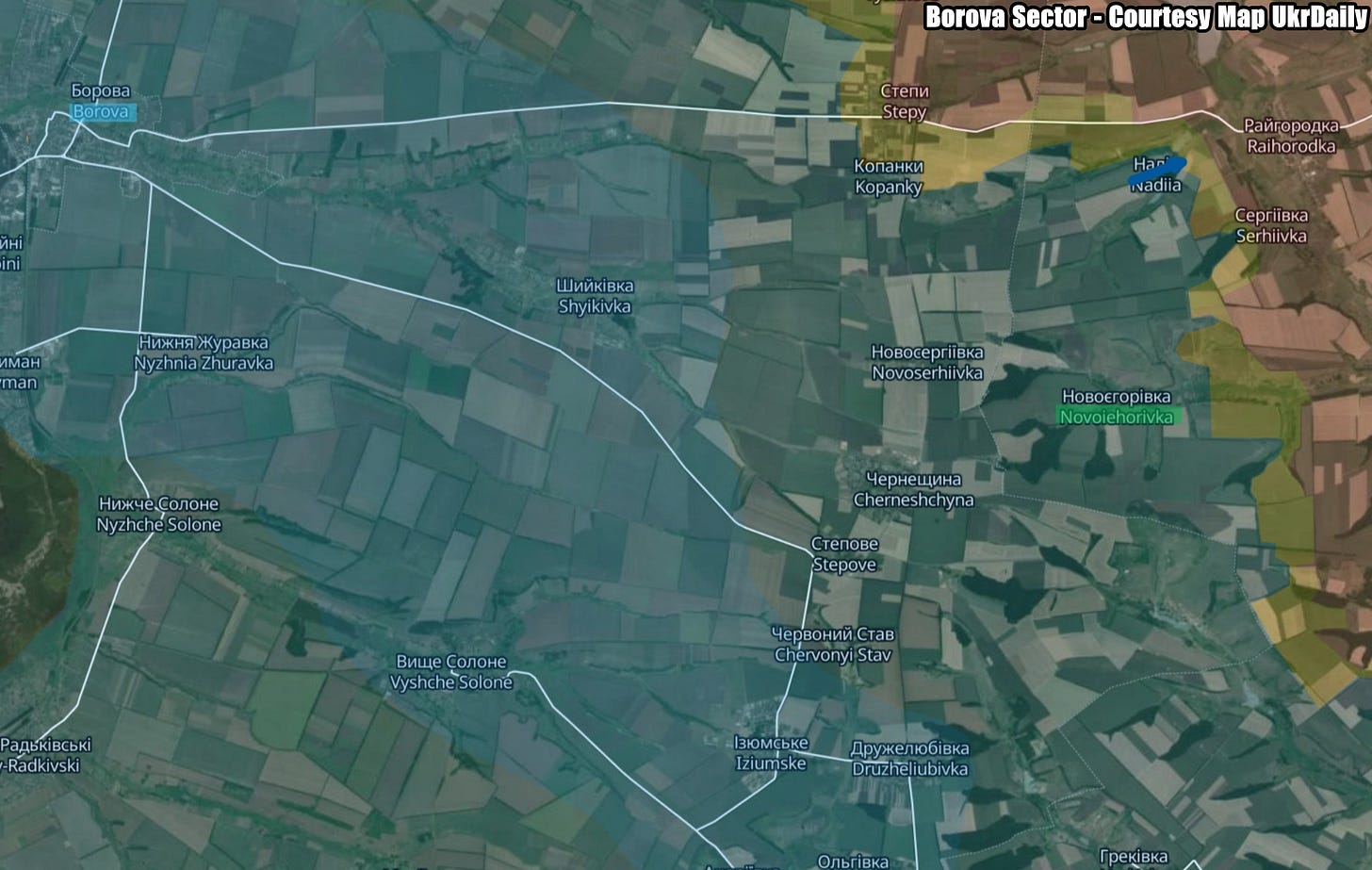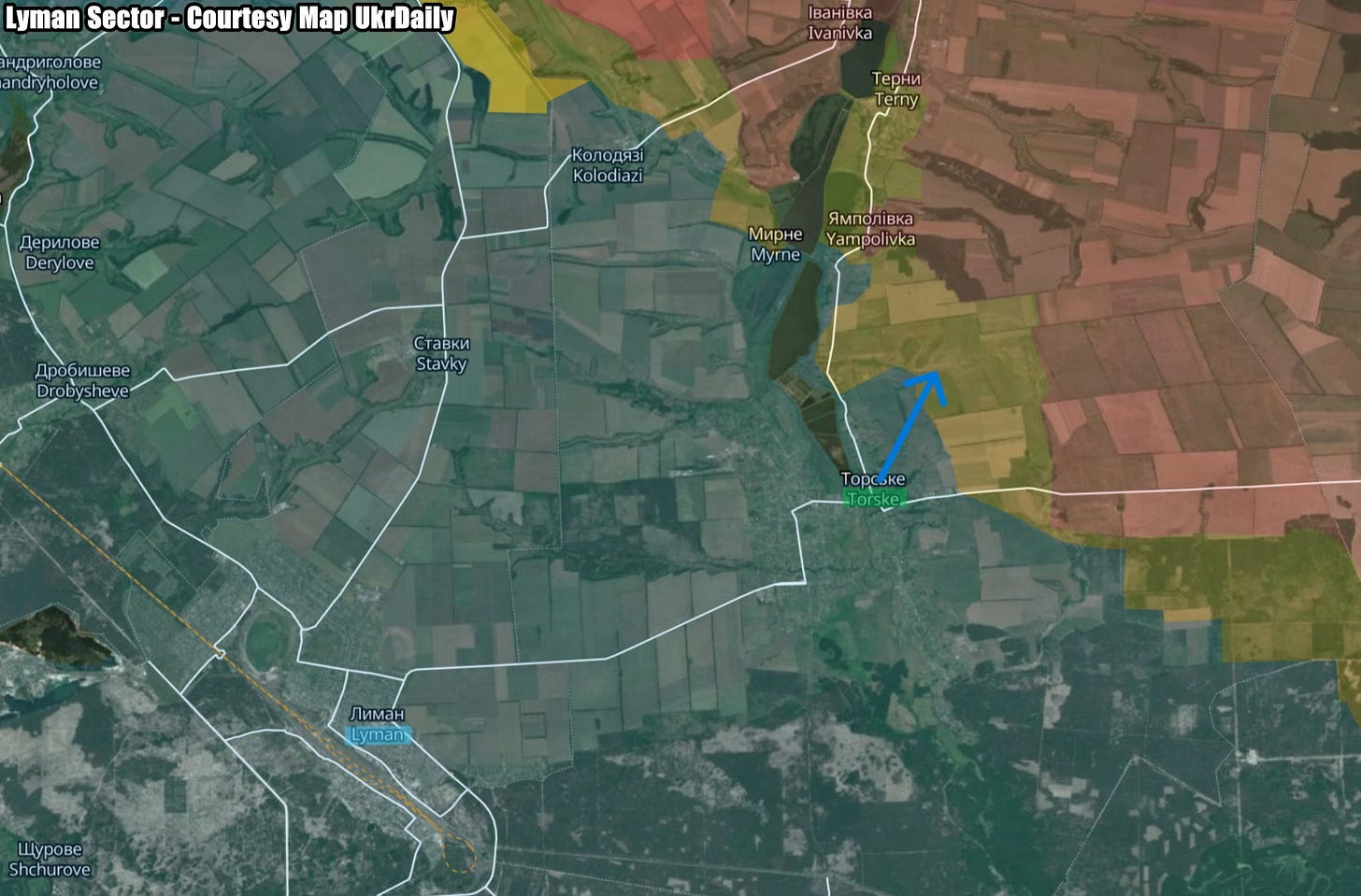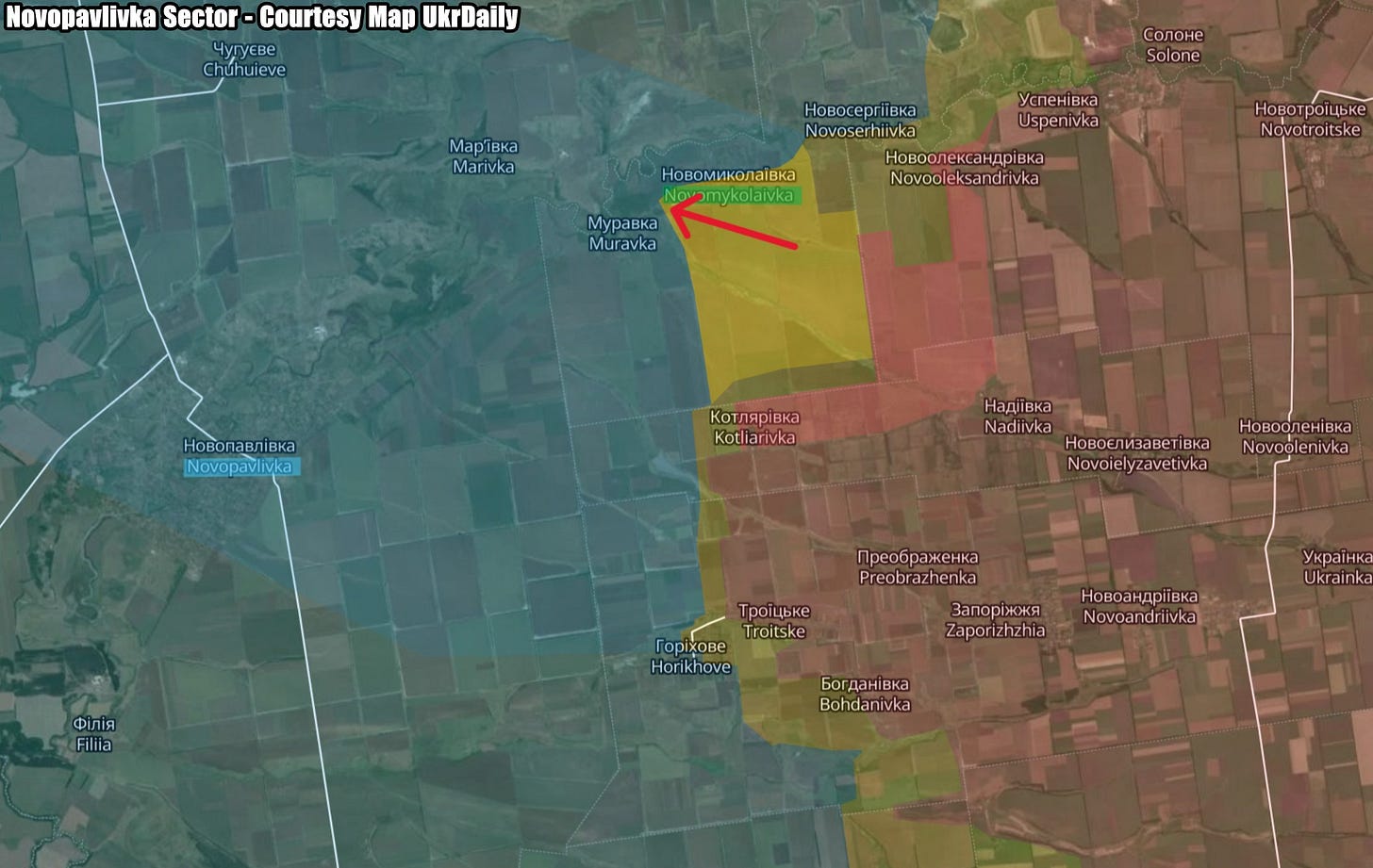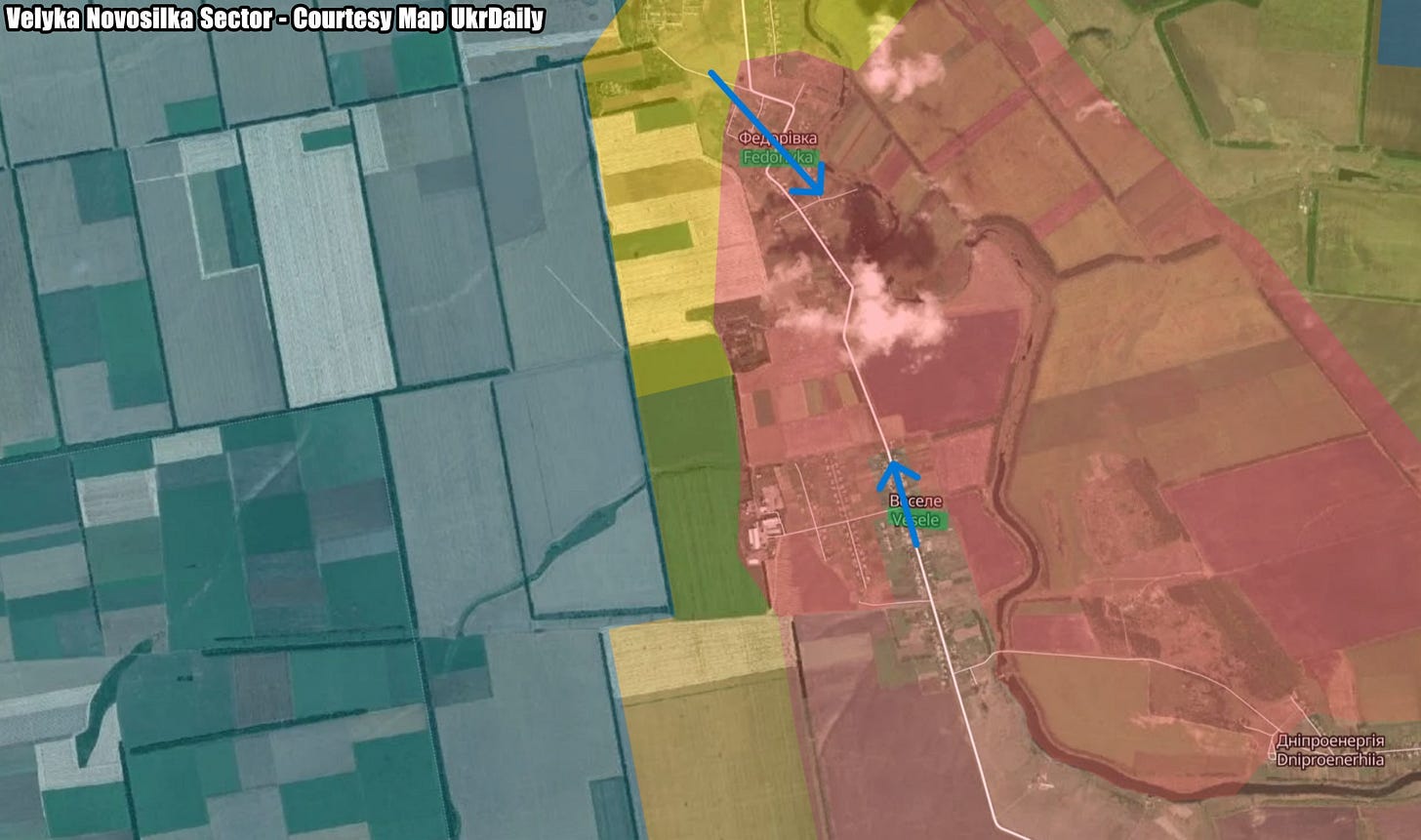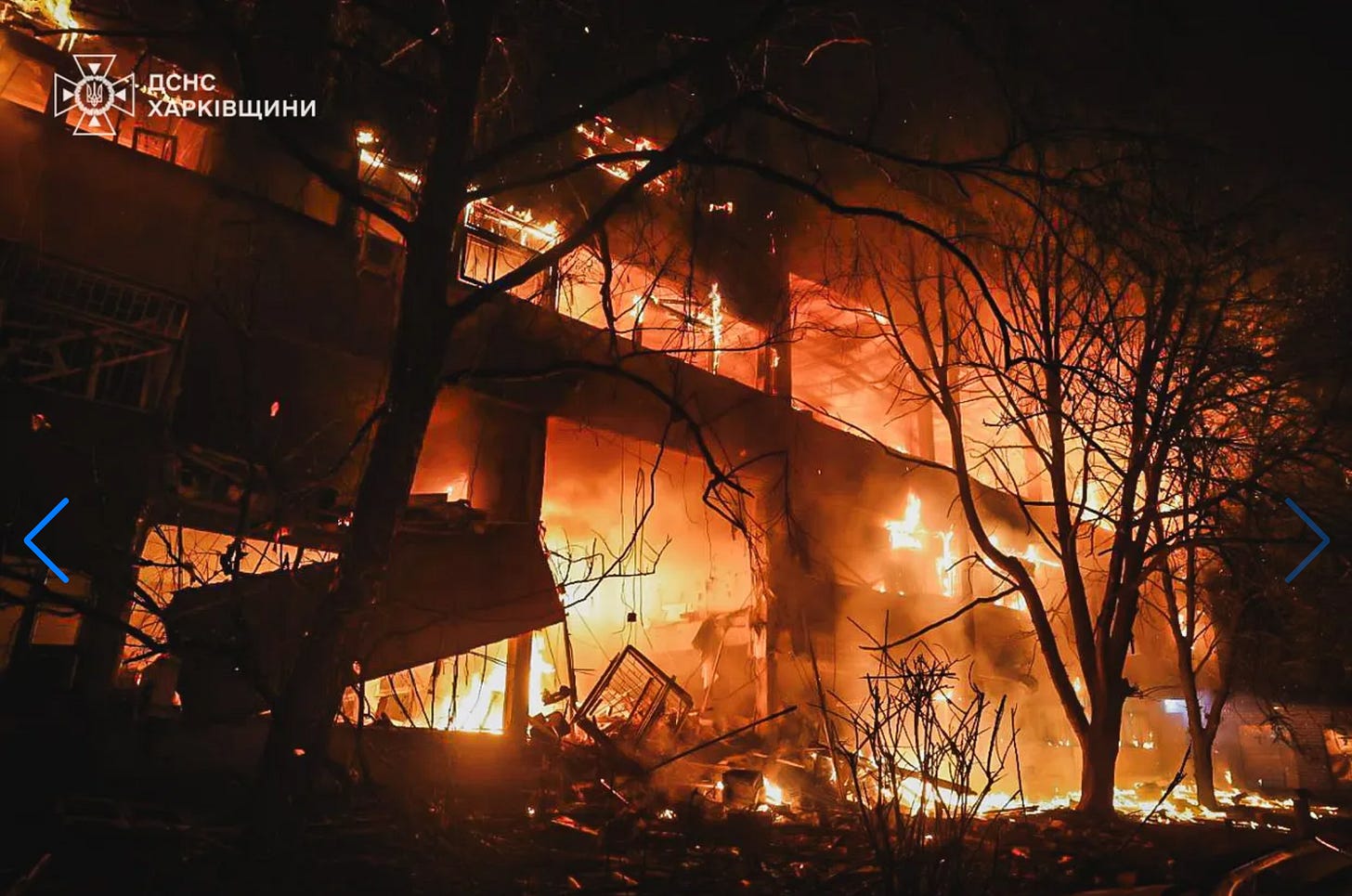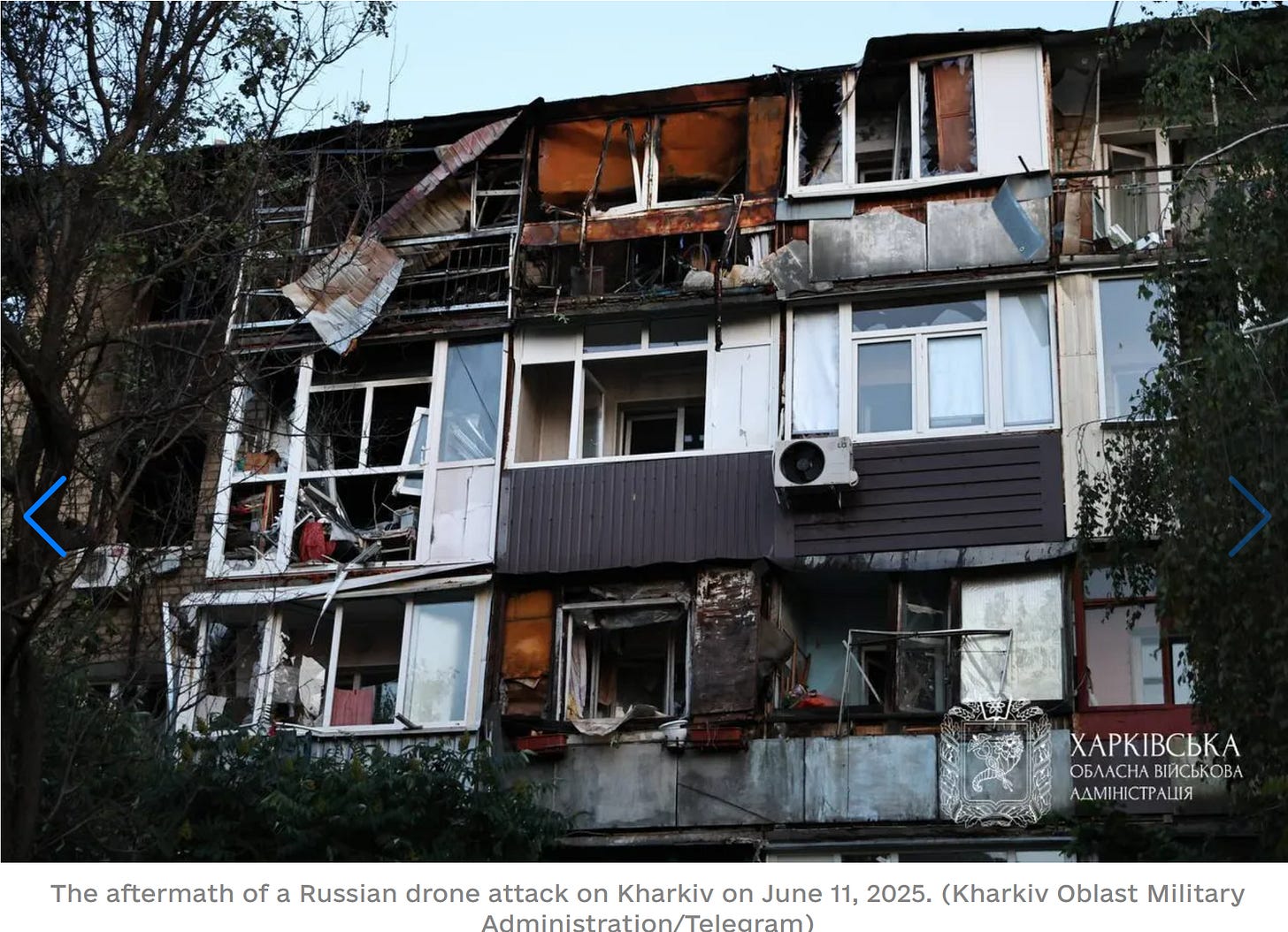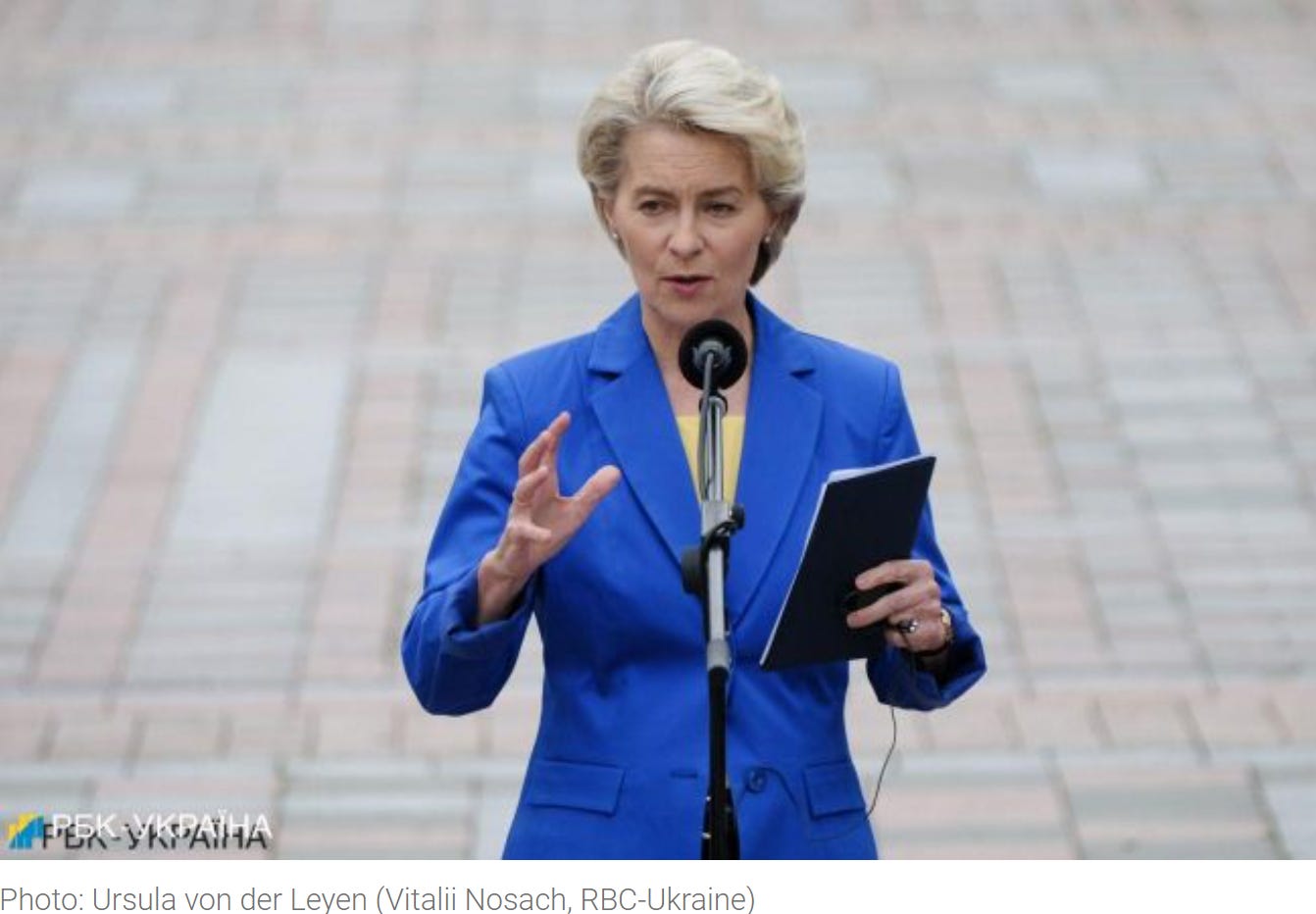Slava Ukraini! In early 2022 I began a Telegram channel aggregating news from a number of sources daily on the war in Ukraine. In June 2023 I began providing a daily draft for the Ukraine War Brief Podcast collecting news from over 70 sources daily, which formed the basis of the script. While the Podcast no longer exists I have continued to make this Brief available for my subscriberss here on Substack and anyone who wishes to keep up with the news from the war.
If you find the Brief informative I would appreciate it if you shared it with others.
All the latest news on the Russo-Ukraine War 6 days per week
ALONG THE CONTACT LINE
GSAFU Morning Report
For: Jun 11, 2025
The General Staff of the Armed Forces of Ukraine in its Operational Information update at 08:00 on Jun 11 stated that day 1204 of the full-scale invasion of the Russian Federation against Ukraine had begun.
The situation on the line of combat remains tense in some sectors. Ukrainian defenders continue to actively counteract the Russian aggressor, causing them significant losses in personnel, equipment and technology. Exhausting the enemy along the entire front line and continuing to disrupt the plans of Russian occupiers to advance deeper into the territory of Ukraine.
Over the past 24 hours, aviation, missile troops and artillery of the Defense Forces have hit 14 areas of personnel and equipment concentration, five artillery equipment, a BPLA control point and another important object of Russian invaders.
During the past day, 220 combat engagements took place.
Over the past 24 hours, the enemy carried out 4 missile strikes, 90 air strikes, used 3,158 attack drones and fired approximately 5,300 artillery shells across the positions of Ukrainian forces and civilians.
Air Force Daily Report
49 ENEMY UAVS DESTROYED
➖➖➖➖➖➖➖➖➖
On the night of Jun 11 (from 10:00 p.m. on Jun 10), the enemy attacked with 85 Shahed attack UAVs and simulator drones of various types from the following directions: Kursk, Orel, Millerovo, Primorsko-Akhtarsk - Russian Federation, Chauda, Gvardiyske - TOT of Crimea, as well as with an Iskander-M ballistic missile from Kursk Oblast - Russian Federation.
The main areas of the air strike are Kharkiv, Donetsk and Odessa regions.
The air attack was repelled by aviation, anti-aircraft missile troops, electronic warfare and unmanned systems units, and mobile fire groups of the Defense Forces of Ukraine.
As of 08:00, air defenses neutralized 49 enemy Shahed UAVs (other types of UAVs) in the east, south, north, and center of the country. 40 were shot down by fire weapons, 9 were lost/suppressed by electronic warfare.
Enemy airstrikes were recorded in 14 locations, and downed aircraft (fragments) fell in 2 locations.
Combat Operations in the Russian Federation
There has been no significant change in the combat environment in this sector since our last report.
The Khortytsia operational-strategic group
(Responsible for the northeastern part of Ukraine. )
Sumy Sector: Russian forces continued offensive operations in Sumy Oblast on Jun 10 but did not make confirmed advances.
Kharkiv Sector: Ukrainian forces recently advanced in the Kharkiv direction.
Ukrainian military observer Kostyantyn Mashovets reported on Jun 10 that Ukrainian forces regained control over the Vovchansk Aggregate Plant in northern Vovchansk (northeast of Kharkiv City).
Kupyansk Sector: Russian forces recently advanced in the Kupyansk direction.
Geolocated footage published on Jun 9 shows Russian forces striking Ukrainian forces northwest of Krasne Pershe (northeast of Kupyansk), indicating that Russian forces recently seized the settlement.
Borova Sector: Ukrainian forces recently advanced in the Borova direction.
Geolocated footage published on June 9 indicates that Ukrainian forces recently advanced north of Novoyehorivka (southeast of Borova).
Lyman Sector: Ukrainian forces recently advanced in the Lyman direction.
Geolocated footage published on June 10 indicates that Ukrainian forces recently advanced northeast of Torske (east of Lyman).
Toretsk Sector: Ukrainian and Russian forces recently advanced in the Toretsk direction.
Geolocated footage published on June 9 and 10 indicates that Ukrainian forces recently advanced in central Dyliivka (north of Toretsk) and in an industrial area northwest of Toretsk.[40]
Geolocated footage published on June 9 and 10 indicates that Russian forces recently advanced northwest of Toretsk.
The Tavria operational-strategic group
(Responsible for the central-eastern and southeastern part of Ukraine.)
Novopavlivka Sector: Russian forces recently advanced in the Novopavlivka direction.
Geolocated footage published on Jun 10 indicates that Russian forces recently advanced on the southwestern outskirts of Novomykolaivka (northeast of Novopavlivka).
Velyka Novosilka Sector: Ukrainian forces recently advanced in the Velyka Novosilka direction.
Mashovets reported that Ukrainian forces pushed Russian forces out of Fedorivka (northwest of Velyka Novosilka). Mashovets stated that Ukrainian forces continue to hold Vesele.
The Odesa operational-strategic group
(Responsible for Kherson, Qırım, (also known as Crimea) and the Black Sea.)
There has been no significant change in the combat environment in this sector since our last report.
TEMPORARILY OCCUPIED TERRITORIES
Nothing major to report.
THE HOME FRONT
Massive Russian drone attack kills 3, injures at least 64 in Kharkiv.
Russia attacked homes and apartment buildings in Kharkiv with drones overnight on June 11, killing at least three people and injuring 64 others, including nine children, the Kyiv Independent reported citing local authorities.
The attack struck a five-story residential building in the city's Slobidskyi district, leaving 15 apartments in flames, Mayor Ihor Terekhov said. Several homes in the Osnovyanskyi district were also hit.
The large-scale attack also struck a trolleybus depot in the city, several vehicles, playgrounds, and local businesses, regional Governor Oleh Syniehubov said.
Terekhov said that nine people have been hospitalized as a result of the attack, including a 2-year-old girl and a 15-year-old boy. Nine children were injured in total, the Prosecutor General's Office said.
Earlier in the night, Terekhov warned residents that a "massive enemy drone attack" was targeting Kharkiv. He later reported that Russia carried out 17 drone strikes in the city.
"Every new day now brings new vile Russian attacks, and almost every strike is telling," President Volodymyr Zelenskyy said.
"And we must not be afraid or postpone new decisions that could make things more difficult for Russia... And this depends primarily on the United States and other world leaders."
Russia has pounded the city of Kharkiv with relentless aerial attacks in recent days.
A series of attacks with drones, missiles, and KAB guided bombs on June 7 left four dead and around 40 injured, as Russia struck civilian targets in the city throughout the night and again in the afternoon.
President Volodymyr Zelenskyy condemned the "brutal strike" and urged the U.S. to allow Ukraine to purchase urgently needed air defense systems.
Already a frequent target of Russian strikes due to its proximity to the front lines, Kharkiv has also come under fire during Moscow's recent record-breaking attacks against cities across Ukraine.
Zelenskyy said on June 10 that Russia has been steadily increasing the number of weapons it launches at Ukraine in its mass overnight assaults.
RUSSIAN WORLD
US-Russian talks to take place in Moscow, Russian envoy says.
Talks between the United States and Russia on resolving issues in their bilateral relations will move to Moscow from Istanbul, Russia's new ambassador to Washington told the state TASS news agency, Reuters reports.
"The recovery of Russian-American relations is still a long way off," Ambassador Alexander Darchiev told TASS, adding that the rapprochement with Moscow was being slowed by the so-called U.S. "deep state" and anti-Russian "hawks" in Congress.
"I can confirm that the next negotiations of the delegations will take place in the very near future in Moscow," Darchiev was quoted as saying.
The war in Ukraine triggered the biggest confrontation between Moscow and the West since the depths of the Cold War. Senior diplomats in both Moscow and Washington told Reuters in 2024 that they could not recall relations ever being worse.
The administration of U.S. President Donald Trump casts the Ukraine conflict as a proxy war between the United States and Russia, and Trump has repeatedly warned of the risk of it escalating into a world war.
RELATED INTERNATIONAL NEWS
US to cut military aid to Ukraine, Hegseth says.
The United States will reduce funding allocated for military assistance to Ukraine in its upcoming defense budget, the Kyiv Independent reported citing U.S. Defense Secretary Pete Hegseth testimony in a congressional hearing on June 10.
"It is a reduction in this budget," Hegseth told lawmakers in the U.S. House of Representatives. "This administration takes a very different view of that conflict. We believe that a negotiated peaceful settlement is in the best interest of both parties and our nation's interests, especially with all the competing interests around the globe."
The Pentagon has not yet released the full documentation regarding its 2026 budget. According to Hegseth, the pending budget "provides a historic level of funding for military readiness, putting (U.S.) warfighters and their needs first."
Hegseth did not disclose details as to the extent of the funding cuts to Ukraine.
The Pentagon's announcement follows weeks of intense Russian attacks on Ukrainian cities, including record-breaking drone strikes against Kyiv. Amid the escalating aerial assaults, President Volodymyr Zelensky has urged the U.S. to support Ukraine with critical air defense systems.
Ukraine has offered to buy these systems outright rather than requesting military aid.
Since Russia launched its full-scale invasion of Ukraine in February 2022, the U.S. has provided Kyiv with over $66 billion in defense support. But U.S. President Donald Trump halted the approval of new military aid packages to Kyiv when he began his second term in January.
Under Trump's leadership, Washington's policy towards Ukraine shifted dramatically. Calls to support Ukraine's independence and sovereignty have been replaced with demands that Ukraine make a deal with Russia, and Trump has at times lashed out at Zelenskyy.
After the leaders' infamous clash during an Oval Office meeting in February, the U.S. temporarily suspended all military aid to Ukraine. Hegseth, who ordered the temporary halt, did not attend the most recent Ukraine Defense Contact Group meeting on June 4 — the first such absence by a U.S. defense chief since the beginning of the full-scale invasion.
Zelenskyy also confirmed in a recent interview that the U.S. diverted 20,000 anti-drone missiles originally intended for Ukraine to American forces in the Middle East.
Russia recruits Serbians for antisemitic provocations in France.
Three Serbs were indicted and imprisoned in Paris, suspected of being paid to degrade Jewish places in Paris with green paint last weekend. They are believed to have acted "for the purpose of serving the interests of a foreign power", possibly Russia, Swiss broadcaster RTS reports.
According to a judicial source, two men born in 1995 and one born in 2003 are implicated for degradations committed in meetings, because of religion or supposed ethnicity, and to serve the interests of a foreign power, which is punishable by 20 years of criminal detention and 300'000 euros fine.
They are suspected of having sprayed green paint on the wall of the Righteous of the Holocaust Memorial, two synagogues and a restaurant of the Jewish community, located in the 4th arrondissement of the capital, and a synagogue in the 20th arrondissement.
According to a source close to the case, investigators suspect Russia has instigated these actions, but the case is at this stage devoid of evidence, according to another source close. Serbia, where several dozen Russians have settled in the last three years, has never severed its historical and political ties with Russia and has imposed no sanctions on Moscow since the invasion of Ukraine in February 2022.
"From the start, we thought of an operation of this order, given the similarities with the operating mode" used for the Red Hands tags on the wall of the Righteous at the Holocaust Memorial last year, a source close to the investigation told AFP earlier this week. In this case, three Bulgarians, suspected of having painted them, were indicted and imprisoned at the end of 2024.
Red hand tags, symbols that may be related to the lynching of Israeli soldiers in Ramallah in 2000, were analyzed by the security services as an operation of interference on the part of Russophones.
In the fall of 2023, two Moldovans were arrested for tagging David stars on facades of Parisian buildings, in another alleged interference operation.
Viginum, the French organization to fight against foreign digital interference, is, it said in early May that nearly 80 disinformation operations were carried out online between the end of August 2023 and the beginning of March 2025 by "russian actors" targeting mainly the Ukrainian government and countries supporting Ukraine, including France.
The three men, presented by a source as performers simply motivated by a remuneration but without awareness of geopolitical issues, are, they were arrested Monday in the Alpes-Maritimes as they were preparing to leave the territory.
Two suspects have been placed in pre-trial detention, the third will be set mid-week next, according to the judicial source.
NATO Seeks to Include Ukraine Funds in New Spending Target.
NATO allies will consider allowing contributions to Ukraine’s defense to be included in the new spending target alliance members are expected to adopt at a leaders’ summit later this month, Bloomberg reports.
The North Atlantic Treaty Organization will also propose working toward eliminating defense trade barriers, according to a preliminary draft of the summit declaration seen by Bloomberg. The draft will likely change before the final version is agreed to at the meeting in The Hague.
The one-page declaration focuses solely on defense spending, a stark departure from last year’s statement that ran more than 5,000 words and included a pledge of long-term security assistance for Ukraine.
The brevity of both the statement and the summit itself — which will include a dinner with the king of the Netherlands and a sole working session on defense spending — is meant to limit the potential for public quarreling between President Donald Trump and allies, according to people familiar with the matter.
NATO Secretary General Mark Rutte has focused the summit on delivering a win for Trump in the form of an agreement among members to spend at least 5% of GDP on defense, said the people, who spoke on the condition of anonymity. They’ll also seek to keep the US fully engaged in NATO.
Allies will commit to allocating at least 3.5% of economic output to core defense requirements by 2032, plus an additional 1.5% to protect infrastructure, defend networks and ensure civil preparedness, meeting the 5% threshold the US has insisted on.
Notably absent from the statement is the prospect of Ukraine joining the military alliance, which featured prominently at previous summits. Last year’s $40 billion pledge for Kyiv has also not been put back on the table.
The preliminary draft reiterates allies’ commitment to collective defense, that an attack on one member is considered an attack against all, and allies will take appropriate action. Trump sent shock-waves through NATO in the past by suggesting the US wouldn’t protect allies who failed to reach the spending target.
In the statement, Russia is recognized as a “threat” to Euro-Atlantic security, which was something most members had been calling for but was not considered a given. It is not, however, recognized as the aggressor of Ukraine. There is no mention of China, which previously had been referred to as a “decisive enabler” of Russia’s invasion of Ukraine.
EU unveils 18th package of sanctions against Russia, targeting energy, banking, oil.
The 18th package of European Union sanctions against Russia will include additional restrictions on energy, banking, oil, and other areas, the Kyiv Independent reported citing an announcement by European Commission President Ursula von der Leyen on June 10.
After the 17th package of sanctions against Russia came into effect on May 20, Ukraine's allies announced that the next package of restrictions was already in the works, after Moscow repeatedly refused to accept a ceasefire.
Russian troops also continue to advance slowly along the front line, approaching Ukraine's Dnipropetrovsk Oblast and moving deeper into Sumy Oblast.
"Russia's goal is not peace," von der Leyen said. "Strength is the only language that Russia will understand."
The EU has proposed for the first time a ban on transactions involving the Nord Stream 1 and Nord Stream 2 pipelines, as well as a reduction in the oil price cap from $60 to $45 per barrel, as one-third of Russia's government revenue still comes from oil exports, according to von der Leyen.
Von der Leyen added that the amendments to the oil price cap are a Group of Seven (G7) coalition measure, so it will be discussed at the G7 summit to be held on June 15-17 in Kananaskis County, located in the western province of Alberta, Canada.
The EU will also add 77 more shadow fleet vessels to comply with the cap to prevent Russia from circumventing sanctions and propose imposing a ban on imports of petroleum products made from Russian oil.
Another part of the sanctions will be aimed at the Russian banking sector, with the EU wanting to add 22 more Russian banks to the list of those who can no longer use the SWIFT international system.
The EU also proposes to extend the ban on transactions to financial operators in third countries that finance trade with Russia, bypassing sanctions, and to impose limitations on the Russian Direct Investment Fund, its subsidiaries, and investment projects.
Further EU restrictive measures will include a ban on exports worth more than 2.5 billion euros ($2.8 billion), which must deprive the Russian economy of critical technologies and industrial goods, von der Leyen said.
Machinery, metals, plastics, and chemicals used as raw materials for industry, as well as dual-use goods involved in the production of weapons and drones, will be affected, according to von der Leyen.
The European Commission President also emphasized that the EU wants its sanctions to be more effective. Thus, the EU would list another 22 Russian and foreign companies, including those from China and Belarus, providing direct or indirect support to Russia's military and industrial complex. These additions will bring the total number of sanctioned companies to over 800.
EU countries will start debating the proposal this week.
Serbia's Vucic, Romania's Dan travel to Ukraine in their first official visits.
Serbian President Aleksandar Vucic is visiting Ukraine on June 11 to take part in the Ukraine-Southeast Europe Summit in Odesa, the Kyiv Independent reported citing an announcement by Serbia's Presidential Office.
The one-day trip will mark the Moscow-friendly Serbian leader's first official visit to Ukraine.
Top representatives of 12 southeastern European countries are expected to attend the meeting at the Ukrainian Black Sea coast city.
Serbia has positioned itself as neutral in the Russia-Ukraine war, striving to balance its position as an EU candidate with its long-standing relationship with Moscow.
Vucic, a populist politician who has held power in Serbia for 12 years, was one of the few European leaders who attended the Moscow Victory Day celebrations on May 9, drawing rebuke from the EU.
The traditionally warm Russian-Serbian ties were strained recently after Russia's intelligence accused Serbian defense companies of supplying arms to Ukraine via intermediaries. Vucic has denied the accusations.
Nicusor Dan, the recently elected president of Romania, will also visit Odesa to take part in the summit, the Romanian Presidential Office said.
President Volodymyr Zelenskyy invited Dan to visit Ukraine shortly after the latter won the May presidential election. Dan ran on a centrist, pro-EU platform against far-right Eurosceptic George Simion.
While Simion has vocally opposed military aid for Kyiv, Dan pledged to maintain Romania's pro-Ukraine course.
MILITARY & TECH
Magura V7 Naval Drones Equipped With Latest AIM 9 Missile Version.
Ukrainian Magura V7 multi-purpose naval drones shot down Russian Su-30 fighter aircraft using the latest version of the AIM-9 missile, Militarnyi reports.
Kyrylo Budanov, the Chief of the Defence Intelligence of Ukraine, said in an interview with The War Zone.
It was previously believed that the drones had been equipped with AIM-9M missiles — a variant from the late 1980s. However, according to Budanov, Magura V7s have received much more modern weaponry.
AIM-9X is the latest variant in the Sidewinder missile family, officially adopted into service in 2003. Currently, there are two versions in existence — Block 1 and Block 2 — though it remains unspecified which one is being used on the Ukrainian drones.
Key enhancements include the integration of the new MK 139 motor, which extends the missile’s maximum range to 30 kilometers and increases its velocity.
An upgraded Lock-On After Launch (LOAL) capability enables more effective missile deployment via the Link 16 data system.
Additionally, the traditional infrared seeker has been replaced with an advanced infrared imaging sensor, significantly improving target acquisition and tracking accuracy while reducing susceptibility to enemy infrared countermeasures.
In addition, the missile is equipped with a radio frequency receiver, enabling in-flight retargeting through radio correction during long-range engagements.
The naval drone developed by Uforce is twice the size of its predecessor, Magura V5, and, thanks to its increased payload capacity, has gained the status of a multi-purpose platform.
The new 7.2-meter fiberglass hull has a total weight of 3,400 kg — two tons heavier than the previous model.
The increase in size has affected its speed characteristics: the cruising speed is 23 knots, with a maximum speed of at least 39 knots. At the same time, its seakeeping capabilities have improved — the drone operates confidently in sea conditions with waves up to 3 points on the Beaufort scale, whereas Magura V5 was limited to 2 points.
One of the key areas of improvement has been autonomy. The drone can operate for at least 48 hours, and up to 7 days when equipped with a generator.
Thanks to the increased fuel tanks of up to 1,200 liters and an efficient 270-horsepower diesel engine, the range has increased from 450 to 800 nautical miles, which is approximately 1,500 kilometers.
Magura V7 is capable of carrying up to 650 kg of payload, enabling it to be equipped simultaneously with a warhead and additional armaments, including a turret-mounted machine gun or a twin launcher for two surface-to-air missiles.
That’s it for today’s Brief folks if you would like to keep up with events in Ukraine daily please consider subscribing, it’s free!


